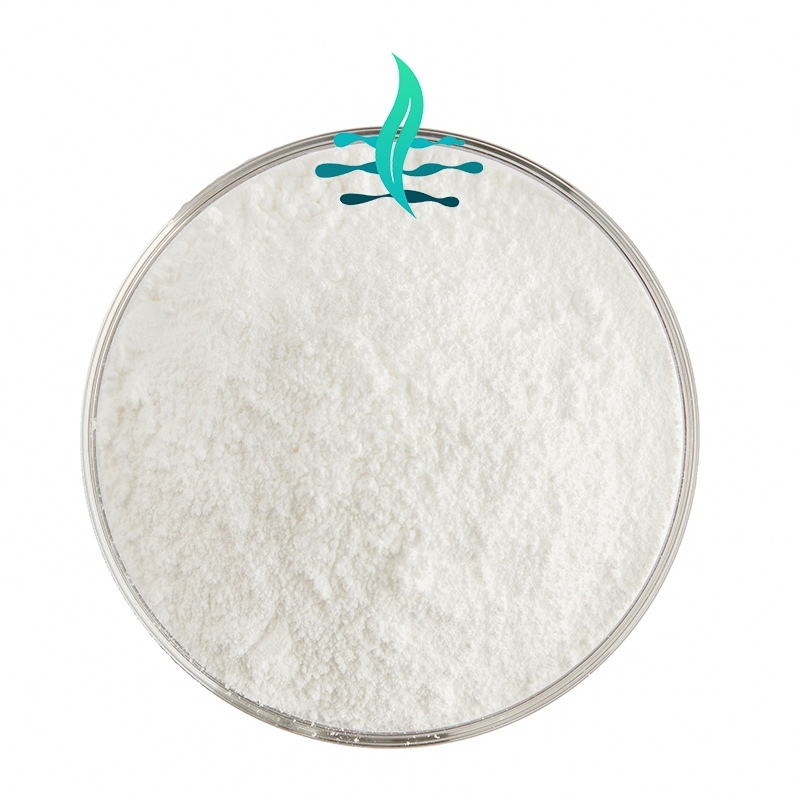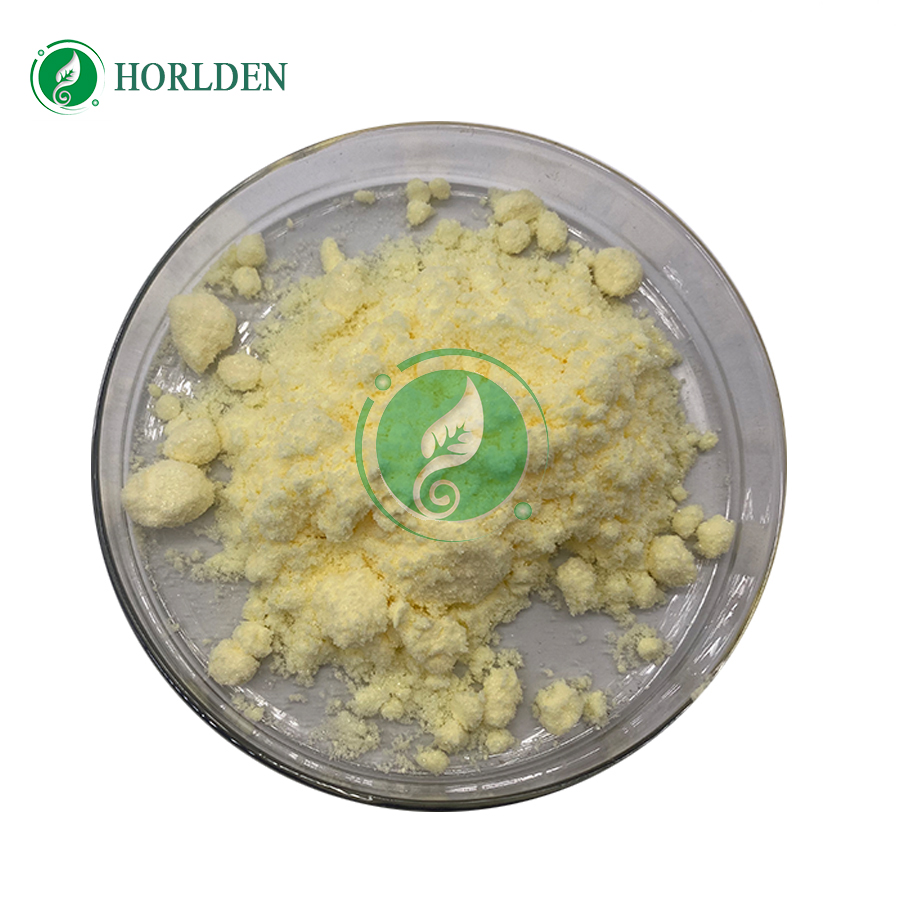-
Categories
-
Pharmaceutical Intermediates
-
Active Pharmaceutical Ingredients
-
Food Additives
- Industrial Coatings
- Agrochemicals
- Dyes and Pigments
- Surfactant
- Flavors and Fragrances
- Chemical Reagents
- Catalyst and Auxiliary
- Natural Products
- Inorganic Chemistry
-
Organic Chemistry
-
Biochemical Engineering
- Analytical Chemistry
- Cosmetic Ingredient
-
Pharmaceutical Intermediates
Promotion
ECHEMI Mall
Wholesale
Weekly Price
Exhibition
News
-
Trade Service
The unpleasant sour and bitter taste of indigo affects consumer acceptance
.
The combination of blueberries and indigo can improve the taste of indigo and enhance the nutritional quality
of complex products.
In addition, blueberries and indigo fruits have high moisture content, soft skin, easy mechanical damage during collision, high postharvest loss rate, and are not easy to store
.
Therefore, blueberries and indigo fruits are generally processed into preserved fruits, fruit juices, fruit powders and other products to extend their shelf life and enhance their economic value
.
Xing Zhang, Jinfeng Bi, Qinqin Chen* of the Key Laboratory of Agricultural Products Processing of the Ministry of Agriculture and Rural Affairs, Institute of Agricultural Products Processing, Chinese Academy of Agricultural Sciences, studied the water mass fraction, glass transition temperature (Tg), brightness, antioxidant capacity and dynamic changes of antioxidant substances within 12 weeks of storage of blueberry-indigo composite lyophilized powder at different temperatures (4, 25, 37 °C) and Hr (43%, 75%, 95%).
The changes of processing characteristics and the degradation of anthocyanins of composite fruit powder were also explored, aiming to provide a reference for evaluating the storage stability of blueberry-blue indigo composite lyophilized powder during processing, transportation and sales
.
1.
Changes in basic physical and chemical properties of blueberry-blue indigo composite freeze-dried powder during storage
Moisture mass fraction and Tg
The water mass fraction and Tg are closely related to the storage quality of the sample, and their changes during storage are shown in Figure 1
.
Samples under different storage conditions showed a trend
of increasing water mass fraction after storage up to 12 weeks.
After 12 weeks of storage at 25 °C, the water mass fraction increased the most under the condition of 75% of Hr, from 4.
2% (0 days of storage) to 9.
5%.
Hr followed by 43% (rising to 9.
2%); The least increase (to 9.
0%) at 95% of HR; Different relative humidity conditions had no obvious effect on the moisture mass fraction of blueberry-indigo composite lyophilized powder
.
After 12 weeks of storage at 75% Hr, the water mass fraction of samples increased the most at 25 °C (up to 9.
5%), followed by samples at 37 °C (up to 9.
1%), but there was no significant difference in water mass fraction between the two, while the water mass fraction of samples at 4 °C increased the least (to 8.
4%)
.
Relative humidity conditions have a more significant effect on the moisture mass fraction of powders than temperature
.
Low temperature and low humidity conditions are more conducive to powder storage
.
brightness
As shown in Figure 2, the L* value decreased significantly after 12 weeks of storage under different conditions
.
Among them, at 25 °C, the L* value gradually decreased with the increase of Hr.
At 75% Hr, the higher the temperature, the more significant
the overall decrease in L* value.
However, after 10~12 weeks of storage, the L* value (about 10) of blueberry-indigo composite fruit powder tended to be stable under different storage conditions, and at this time, the influence of temperature and relative humidity on the L* value of blueberry-blue indigo composite lyophilized powder was not obvious.
Compared with before storage, the L* value under different storage conditions decreased by about 33%.
2.
Changes in antioxidant content and antioxidant capacity during the storage of blueberry-indigo composite lyophilized powder
Total phenolic content
As shown in Figure 3, under different relative humidity conditions at 25 °C, the total phenolic content decreased significantly with the increase of relative humidity.
Under the condition of 75% Hr, the total phenolic content gradually decreased
with the increase of storage temperature.
After 12 weeks of storage, the total phenolic content decreased the most at 25 °C and 95% of Hr (to 187.
12 mg/g), which decreased by 60.
16%.
Secondly, the total phenolic content decreased more (to 215.
32 mg/g) at 37 °C and 75% of Hr, a decrease of 54.
16%.
After 12 weeks of storage, the total phenolic content decreased the least at 25 °C and 43% Hr (to 249.
12 mg/g), which decreased by 46.
96%.
Secondly, the storage conditions with a small decrease in total phenolic content were 25 °C, 75% Hr (down 52.
93%) and 4 °C with 75% Hr (53.
85% decrease in total phenol content).
Since phenolic substances are sensitive to high temperature and high humidity conditions, the total phenolic content loss is higher
under the conditions of 37 °C, Hr 75%, 25 °C and Hr 95%.
Compared with temperature, relative humidity conditions have a greater influence on total phenol content, and low temperature and low humidity conditions are conducive to the retention
of total phenols in blueberry-blue indigo composite freeze-dried powder.
Total flavonoid content
As can be seen from Figure 4A, when stored at 25 °C for 12 weeks, the total flavonoid content gradually decreases
with the increase of Hr.
After 12 weeks of storage, the total flavonoid content decreased the least under the condition of 43% of Hr, which decreased by 60.
85%.
Flavonoids have the same characteristics as phenols and are not resistant to high temperature and humidity
.
It can be seen from Fig.
4B that the content of total flavonoids decreased the least under the conditions of 75% Hr and 4 °C in the 12th week of storage, which decreased by 59.
59%.
The total flavonoid content of powder decreased the most at 37 °C, dropping to 104 mg/g, a decrease of 63.
94%.
The results showed that the retention rate of flavonoids was higher at low temperatures (4 °C and 25 °C), while high temperature and humidity were not conducive to the retention
of flavonoids.
After storage to the 10th week, the total flavonoid content of blueberry-indigo complex freeze-dried powder tended to be stable (about 120 mg/g)
under different storage conditions.
Anthocyanin composition
It can be seen from Table 3 that the content of anthocyanins in 6 anthocyanins stored for 12 weeks under different conditions showed a downward trend
.
The total anthocyanin content of the control group samples was 303.
36 mg/g
.
After 12 weeks of storage, the content of six anthocyanins and the content of total anthocyanins decreased with
the increase of Hr at 25 °C.
Among them, the content of anthocyanins and total anthocyanins decreased the least under the condition of Hr 43% (the total anthocyanin content decreased by 22.
92%), Del-3-O-ara, the highest content among the six anthocyanins, decreased by 55.
98 mg/g, and Cya-3-O-glu, the second largest content, decreased by 11.
42 mg/g, which may be due to the low stability of these two anthocyanins, which are more likely to be degraded
during storage because of high relative humidity.
At the same time, humidity had a greater
effect on the content of six anthocyanins and the total anthocyanin content than temperature.
As shown in Table 3, after 12 weeks of storage, the total anthocyanin content (152.
19 mg/g) was the highest at 25 °C, the next time at 37 °C (144.
40 mg/g), and the lowest at 4 °C (137.
78 mg/g
).
After 12 weeks of storage, although the total anthocyanin content under different conditions decreased, it could still be maintained at 118.
13~233.
83 mg/g, which may be due to the low decomposition rate of anthocyanins below 60 °C, so at 4, 25 °C and 37 °C, anthocyanins were at a more suitable temperature and had good stability
.
Antioxidant capacity
The results are shown
in Table 4.
The antioxidant capacity measured by the three methods during storage showed a downward trend, and there were obvious differences in the antioxidant capacity of the control group, which may be related to
the decrease of phenolic content 。 After 12 weeks of storage, the powder had the strongest ABTS cation radical scavenging ability at 25 °C and 43% Hr, which decreased by 44.
83% from 200.
07 μmol/g at the beginning of storage to 110.
37 μmol/g.
The ABTS cation radical scavenging ability of powder at 37 °C and 75% Hr was the worst, which decreased by 78.
74% compared with the beginning of storage.
The same trend as the decrease in total phenol content indicates that antioxidant capacity is related
to total phenol retention.
The scavenging capacity of ABTS cations was different at 25 °C and 95% Hr, 4 °C and 75% Hr and 37 °C and 75% Hr, but there was no significant difference (P>0.
05).
3.
Study on processing characteristics of blueberry-blue indigo composite lyophilized powder during storage
As shown in Figure 5, after 12 weeks of storage, BFE was the largest at 37 °C and 75% Hr, which increased by 52.
66% from 91.
02 mJ to 138.
95 mJ, indicating poor fluidity
.
BFE was the smallest at 25 °C and 43% Hr, which increased from 91.
02 mJ to 116.
14 mJ, an increase of 19.
24%, which was better than that of powder under other conditions, followed by 4 °C and 75% Hr, an increase of 24.
37%, indicating that lower temperature and relative humidity were conducive to maintaining good fluidity of powder, which was conducive to storage
。 As shown in Figure 6, the SE of the control group was 6.
34 mJ/g; Storage for 12 weeks, SE at 25 °C and 43% Hr, 25 °C and 75% Hr, 25 °C and 95% Hr, 4 °C, 75% Hr and 37 °C and 75% Hr SE were 4.
19, 6.
11, 7.
66, 7.
40 and 5.
61 mJ/g
, respectively 。 The experimental results showed that the SE (4.
19 mJ/g) of Hr 43% samples was the smallest and the SE (7.
66 mJ/g) of Hr 95% samples was the largest at 25 °C for 12 weeks, indicating that the mechanical bite force between particles was enhanced and it was not easy to flow, which may be due to the moisture absorption of powder under high relative humidity conditions, resulting in powder particles bonding into clumps
.
At 75% Hr, the SE (5.
61 mJ/g) of the sample at 37 °C was minimal, but overall, the flow characteristics of the powder at each temperature did not differ significantly
.
Conclusion
In this experiment, the effects of temperature and humidity on its physicochemical properties and processing characteristics within 12 weeks of storage were studied by freeze-dried powder ofblueberry-indigo complex.
The results showed that Hr had a more significant effect on the quality of blueberry-indigo composite lyophilized powder than temperature
.
Comprehensive analysis showed that the storage of blueberry-indigo composite lyophilized powder at 25 °C, 43% Hr and 4 °C and 75% Hr were more conducive to the storage, and the water mass fraction and Tg change degree were low during storage, and the retention rate of the active substances total phenols, total flavonoids and anthocyanins was high, and it had good fluidity
.
This article "The Quality and Processing Characteristics of Blueberry-Blue Indigo Composite Freeze-Dried Powder during the Storage Period" is from Food Science, Vol.
43, No.
17, 2022, pages 240-247, authors: ZHANG Xing, BI Jinfeng, CHEN Qinqin, WU Xinye, LI Xuan, LV Ying
.
DOI:10.
7506/spkx1002-6630-20210621-254
。 Click to view information about
the article.







